Discover the Tranquil Beauty of White Horse Temple: A Journey Through Time
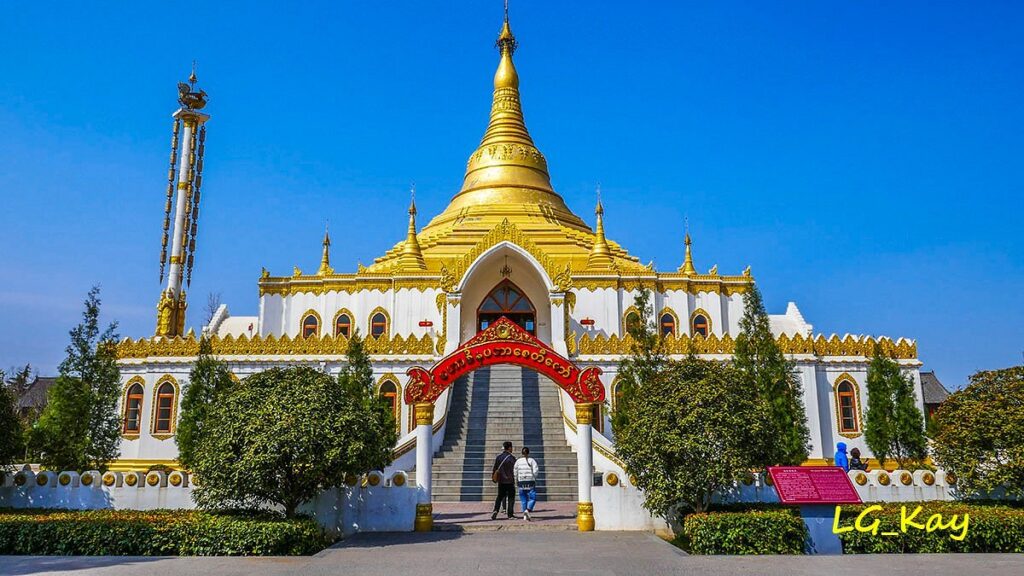
An Essential Guide to Visiting White Horse Temple
In This Guide
- An Essential Guide to Visiting White Horse Temple
- The Rich History and Legends of White Horse Temple
- Main Highlights: What You Absolutely Can’t Miss
- Planning Your Visit: A Practical Guide
- Tickets: Prices, Booking, and Tips
- How to Get There: A Complete Transportation Guide
- Local Cuisine and Accommodation Nearby
- Frequently Asked Questions
- Final Thoughts on Your Trip
Nestled in the historic city of Luoyang, White Horse Temple (洛阳白马寺) stands as a beacon of tranquility and a profound testament to China’s rich Buddhist heritage. Established in 68 AD during the Eastern Han Dynasty, it is recognized as the very first official Buddhist temple in the country, marking the dawn of Buddhism’s journey across Asia. Revered as the “Origin of Buddhism,” this sacred site attracts pilgrims and history enthusiasts from around the globe, eager to explore its serene landscapes and architectural wonders.
As you step through its majestic gates, prepare to be enveloped by an atmosphere steeped in spirituality and history. Spanning approximately 13,000 square meters, White Horse Temple invites you to wander through its unique halls, each designed in a distinctive style that reflects the diverse cultural influences of Buddhism—from the intricate carvings of Indian architecture to the elegant lines of Thai and Burmese designs.
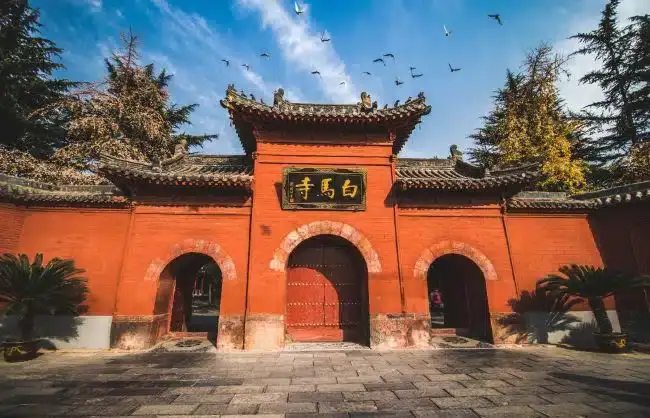
White Horse Temple.
Whether you are a seasoned traveler or a curious newcomer, your visit to White Horse Temple promises a journey filled with beauty, introspection, and a deeper understanding of the cultural tapestry that binds people across continents. Join us as we delve into the essential experiences that this extraordinary temple has to offer, ensuring your visit is nothing short of unforgettable.
The Rich History and Legends of White Horse Temple
White Horse Temple, nestled in the historic city of Luoyang, Henan Province, is a revered site that embodies the rich tapestry of Chinese culture and spirituality. As the birthplace of Buddhism in China, this ancient temple is steeped in history, legends, and architectural marvels that have attracted pilgrims and tourists alike for nearly two millennia.
A Glimpse into History
Founding Background
Established in 68 AD during the Eastern Han Dynasty, White Horse Temple holds the distinction of being China’s first official Buddhist temple. Its creation was inspired by the arrival of Buddhist scriptures and monks, notably the Indian missionaries Kasyapa Matanga and Dharmaratna, who were sent by Emperor Ming of Han. The emperor, intrigued by dreams of a golden deity, sought to introduce Buddhism, leading to the construction of this sacred temple.
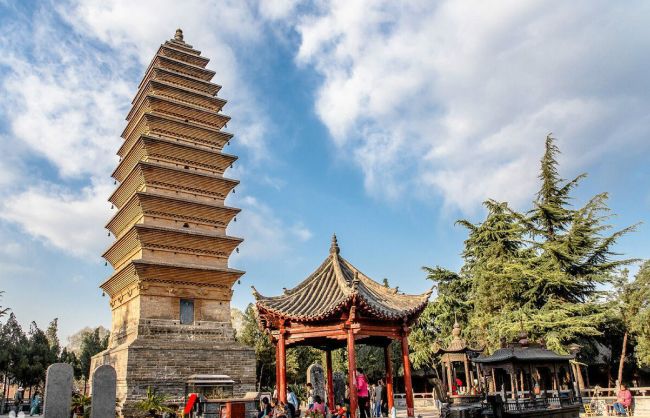
White Horse Temple.
Architectural Significance
The temple complex spans approximately 13,000 square meters and features a harmonious blend of various architectural styles. Notably, it is the only temple globally that showcases Buddhist halls designed in Chinese, Thai, Indian, and Burmese styles, each reflecting the rich cultural exchanges along the Silk Road. This architectural diversity not only highlights the temple’s significance as a cultural melting pot but also serves as a testament to the enduring influence of Buddhism across Asia.
Legends and Myths
The White Horse Legend
The temple’s name, “White Horse Temple,” is said to derive from a legend involving a white horse that carried the Buddhist scriptures from India to China. According to lore, upon reaching the site where the temple now stands, the horse died, prompting the emperor to establish the temple in its honor. This story symbolizes the journey of Buddhism into China and the reverence for the sacred texts that laid the foundation for a new spiritual tradition.
Sacred Relics and Miraculous Events
White Horse Temple is home to several sacred relics, including the remains of the Buddha, which further enhances its status as a pilgrimage site. Over the centuries, numerous miraculous events have been attributed to the temple, such as healing powers and divine interventions. Devotees often recount experiences of enlightenment and spiritual awakening during their visits, underscoring the temple’s profound spiritual atmosphere.

White Horse Temple.
Cultural Celebrations
The Annual Bell Ringing Ceremony
Every year, the temple hosts a significant celebration known as the “Bell Ringing at White Horse Temple.” This event marks the transition from the old year to the new, attracting thousands of locals and visitors. The ringing of the bell is believed to purify the soul and bring good fortune, creating a vibrant atmosphere filled with joy, prayer, and reflection.
Conclusion
Visiting White Horse Temple is more than just a journey through history; it’s an exploration of the cultural and spiritual heritage that continues to influence millions around the world. With its ancient relics, stunning architecture, and the legends that echo through its halls, this temple invites travelers to connect with the profound legacy of Buddhism in China—a truly enriching experience that transcends time and borders.
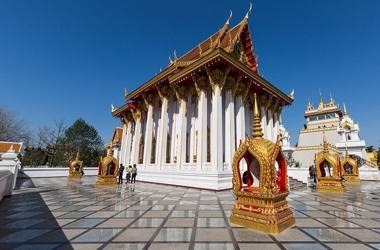
White Horse Temple.
Main Highlights: What You Absolutely Can’t Miss
When visiting the White Horse Temple (洛阳白马寺) in Luoyang, Henan Province, you’ll be stepping into a treasure trove of history and culture that dates back nearly 2,000 years. As the first official Buddhist temple in China, this sacred site is a must-see for anyone intrigued by Buddhism, architecture, and Chinese history. Here are the key highlights you absolutely can’t miss during your visit.
1. Heavenly Kings Hall: Your Journey Begins Here
Upon entering the temple grounds, the Heavenly Kings Hall serves as your grand introduction. Here, you will encounter a smiling Maitreya Buddha alongside the four Heavenly Kings, who are guardians of the Buddhist faith. Look up to marvel at over 50 intricately carved wooden dragons that grace the ceiling, creating an atmosphere of enchantment and reverence.
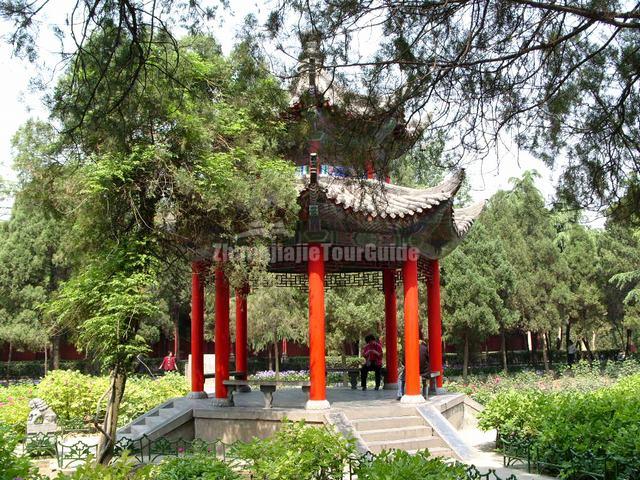
White Horse Temple.
2. Grand Buddha Hall: A Shimmering Sanctuary
The Grand Buddha Hall houses the temple’s star attraction: Shakyamuni Buddha, depicted in resplendent gold. The hall is adorned with colorful lotus carvings and beautifully painted murals that narrate the Buddha’s life story. This hall’s ethereal ambiance is perfect for reflection and photography, offering visual delights at every angle.
3. Mahavira Hall: Home of Rare Treasures
Step into the Mahavira Hall to find the three significant Buddhas: Amitabha (past), Shakyamuni (present), and the Medicine Buddha (future). Among the treasures are 23 ancient Arhat statues, crafted using a unique dry-lacquer technique from the Yuan dynasty. These lifelike figures, over 700 years old, are national treasures that provide a glimpse into the artistry of ancient China.
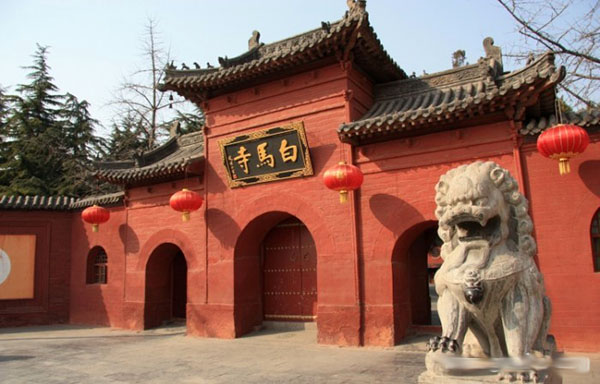
White Horse Temple.
4. International Buddhist Halls: A Cultural Journey
One of the temple’s unique features is its International Buddhist Halls, showcasing architectural styles from four different Asian cultures:
– India Hall: Features a white dome and intricate mandala carvings, reminiscent of Bodh Gaya.
– Thailand Hall: Boasts a golden roof adorned with flying eaves and snake deity motifs (Nagas).
– Myanmar Pagoda: A golden tower housing a jade Buddha, creating a serene atmosphere.
– Japanese Zen Garden: Offers a tranquil rock garden, perfect for meditation and reflection.
Each hall is a mini journey through Asia’s rich Buddhist heritage, making for excellent photo opportunities.
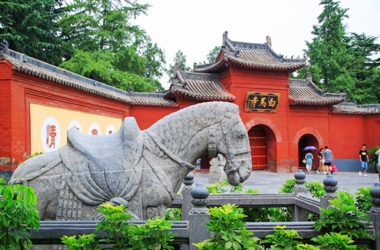
White Horse Temple.
5. Vairocana Pavilion: The Hidden Gem
Perched on Qingliang Terrace, the Vairocana Pavilion is a double-roof hall that honors the cosmic Buddha. The climb to this pavilion rewards you with a serene view and a refreshing breeze—ideal for a moment of peace away from the busier temple areas.
6. Qiyun Pagoda: A Walk of Blessings
Just a short walk from the main temple, you’ll find the Qiyun Pagoda, an 800-year-old structure standing tall at 35 meters. Locals believe that walking around it nine times brings good luck and peace. Take a moment to sit under a shady tree nearby and soak in the tranquility of the surroundings.
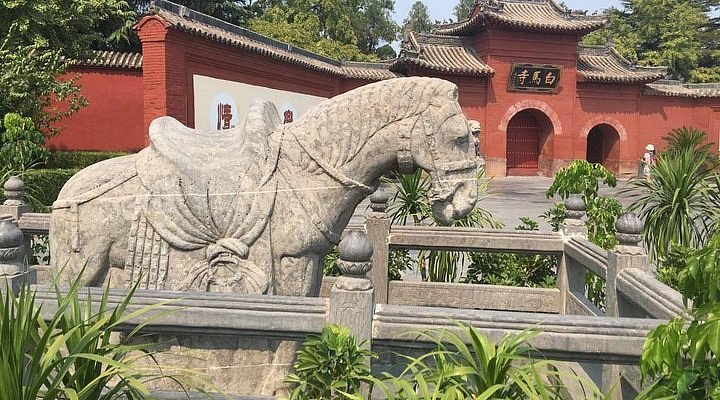
White Horse Temple.
7. Cultural Exhibits: A Glimpse into the Past
If time permits, check out the cultural exhibits that showcase Buddhist relics and ancient tools. This is a fantastic opportunity to deepen your understanding of Buddhist practices and history.
8. The Zen Teahouse: A Moment of Reflection
Don’t miss the Zhiyu Teahouse, tucked away on the east side of the temple. This quiet, Zen-style teahouse allows visitors to enjoy a comforting cup of tea in a serene setting. Here, silence is golden, making it an ideal spot for contemplation.
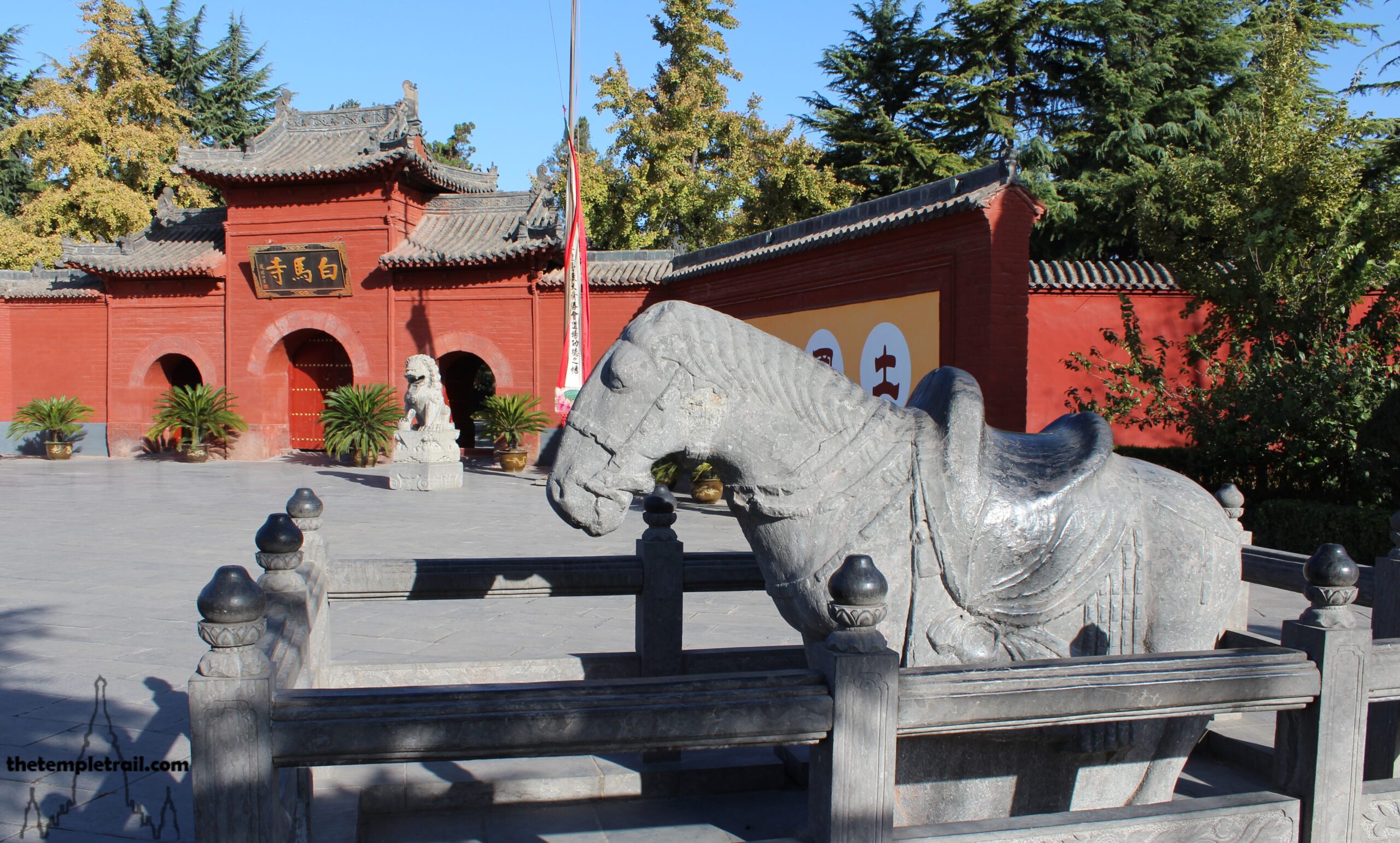
White Horse Temple.
9. Seasonal Considerations: The Best Times to Visit
To truly enjoy your visit, aim for the fall (September to early October) when the weather is pleasantly cool. Spring offers blooming flowers but can be windy, while summer can be hot and sunny. Winter might limit access to some outdoor areas, so plan your visit accordingly.
10. Getting There: Convenient Access
Reaching the White Horse Temple is straightforward. Whether you choose to take a taxi, bus, or metro, the temple is well-connected from various points in Luoyang.
Final Thoughts
White Horse Temple is not just a historical site; it’s a living embodiment of the cultural and spiritual journey of Buddhism in China. As you wander through its hallowed halls, take the time to absorb the calm and history that surrounds you, ensuring your visit is filled with both learning and introspection.
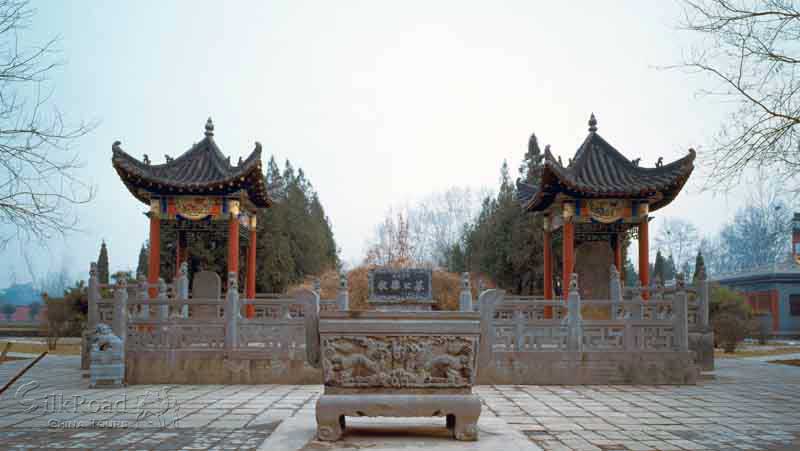
White Horse Temple.
Planning Your Visit: A Practical Guide
Visiting White Horse Temple in Luoyang is more than just a trip; it’s an immersion into the rich tapestry of Chinese history and the profound depths of Buddhist culture. This ancient site, revered as the birthplace of Buddhism in China, offers a unique experience that combines spirituality, stunning architecture, and tranquil gardens. Here’s your practical guide to ensure a fulfilling visit.
Getting There
Transportation Options:
-
From Luoyang Airport: Approximately 15 kilometers from the city center. You can take an airport shuttle, a taxi, or a ride-hailing service like Didi. Expect a travel time of about 30 minutes.
-
From Luoyang Railway Stations:
- Luoyang Railway Station: Located in the city center, it’s busy but convenient for local transport.
- Luoyang Longmen Station: This station serves high-speed trains and has excellent facilities for easy access to nearby attractions.
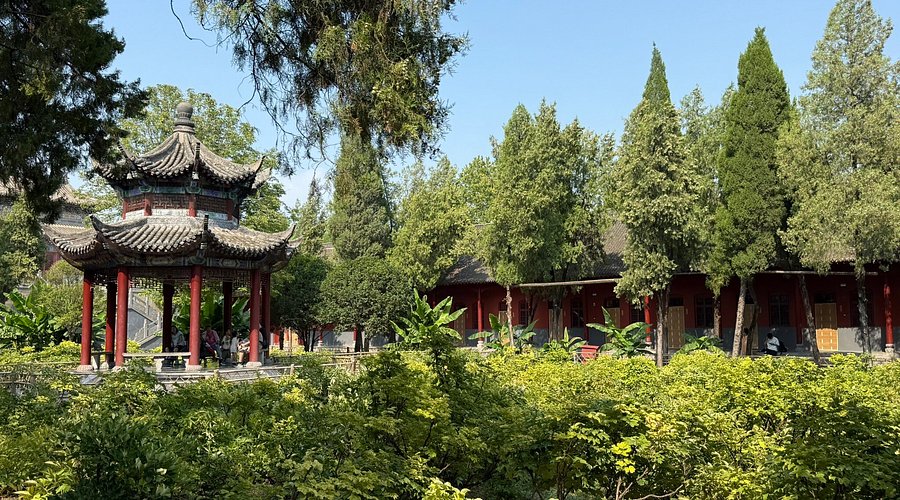
White Horse Temple.
Local Transport:
– By Bus: Take Bus 56 or 58 from downtown Luoyang for an authentic local experience, costing only 1.5 RMB. The bus ride takes around 45 minutes.
– By Metro + Bus: Travel by Metro Line 1 to Qiming South Road Station, then switch to Bus 56 directly to the temple.
– By Taxi or Didi: The quickest way, taking about 30 minutes and costing approximately 35 RMB. Just input “White Horse Temple South Gate” (白马寺南门) into your app.
Opening Hours & Admission
- Ticket Price: 35 RMB for adults.
- Recommended Visiting Time: Approximately 2–4 hours, depending on your level of interest.
- Operating Hours:
- Peak Season (April 1 – November 30): 07:30 AM – 06:30 PM
- Off-Peak Season (December 1 – March 31): 08:00 AM – 05:30 PM
Suggested Itinerary
Short & Sweet (2–3 hours):
– Focus on the main highlights, including the Hall of Heavenly Kings and the Grand Buddha Hall.
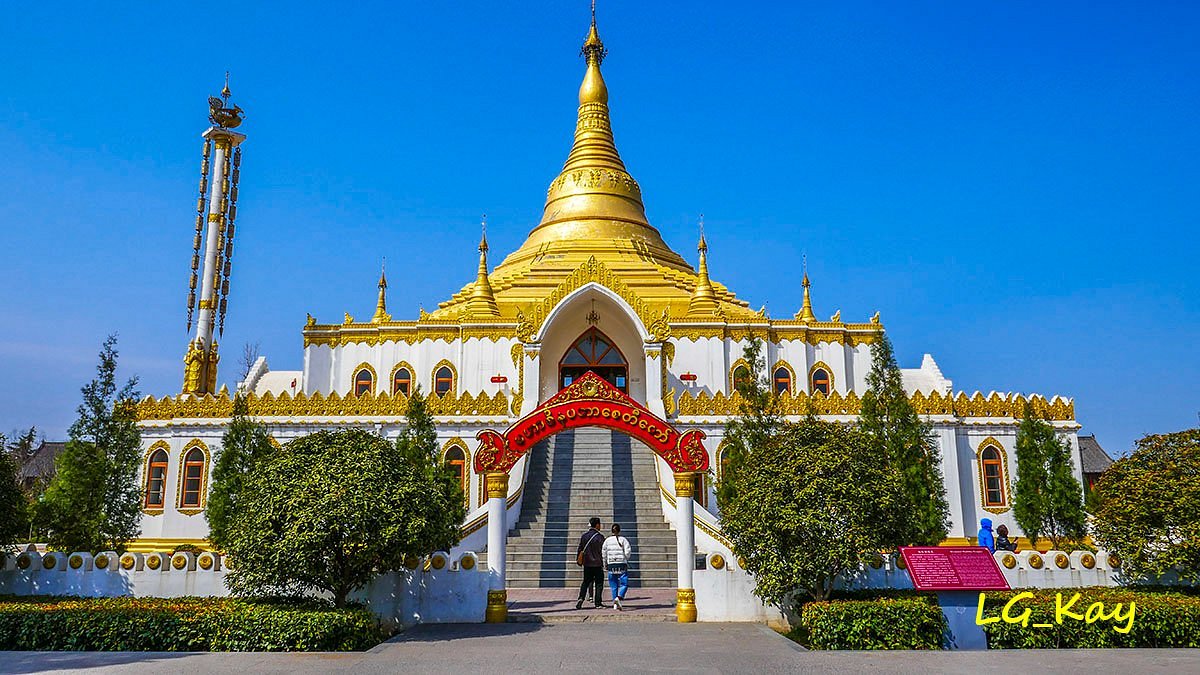
White Horse Temple.
Slow & Soulful (3–4 hours):
– Take your time exploring each hall, learning about Buddhist culture, and soaking in the serene atmosphere.
Key Highlights to Explore:
– Heavenly Kings Hall: Start your journey here, where you’ll encounter majestic statues and intricate carvings.
– Grand Buddha Hall: Home to the awe-inspiring Shakyamuni Buddha and exquisite lotus carvings.
– Mahavira Hall: A treasure trove featuring the Three Buddhas and rare Arhat statues.
– International Buddhist Halls: Experience the architectural diversity representing four Asian cultures.
– Qiyun Pagoda: A short walk will lead you to this historical pagoda, where locals believe walking around it brings good luck.
Tips for a Memorable Visit
-
Best Times to Go: Early morning or late afternoon ensures cooler temperatures and fewer crowds, making it ideal for photography.
-
Seasonal Considerations:
- Fall (September to early October): The best time to visit for pleasant weather and vibrant scenery.
- Spring (mid-March to late April): Enjoy blooming flowers but prepare for strong winds.
- Summer (May to mid-August): Be ready for intense heat; bring sunscreen and stay hydrated.
-
Winter (November to March): Dress warmly as temperatures drop significantly.
-
Cultural Etiquette: Remember that this is a sacred site. Be respectful in your behavior, dress modestly, and maintain a peaceful demeanor.
Additional Experiences
-
Guided Tours: For just 50 RMB, you can join a live guided tour that unveils the stories behind the temple’s history and architecture.
-
Self-Guided Options: Choose audio guides or the Ximalaya app for a more personalized experience.
-
Teahouse Retreat: Don’t miss the peaceful Zhiyu Teahouse on the east side of the temple grounds—perfect for a moment of meditation or simply enjoying a cup of tea.
Final Thoughts
A visit to White Horse Temple is a journey through history and spirituality, offering a chance to connect with the roots of Buddhism in China. Whether you’re captivated by the intricate architecture, the serene gardens, or the rich cultural experience, this temple promises to leave a lasting impression. Plan your visit, soak in the tranquility, and let the ancient echoes of this sacred place guide you on your path of discovery.
Tickets: Prices, Booking, and Tips
Visiting the White Horse Temple offers an enriching experience steeped in history and culture. To ensure your visit goes smoothly, here’s everything you need to know about ticket prices, booking options, and practical tips.
Ticket Information
- Adult Admission: 35 RMB
- Children and Seniors: Discounts may apply, so check at the entrance.
- Recommended Visit Duration: Approximately 2 hours
Opening Hours
- Peak Season (April 1st – November 30th): 07:30 AM – 6:30 PM
- Off-Peak Season (December 1st – March 31st): 08:00 AM – 5:30 PM
Booking Your Tickets
- On-Site Purchase: Tickets can be bought at the entrance, but it’s advisable to arrive early during peak season to avoid long queues.
- Online Reservations: Some travel agencies and platforms may offer online booking options. Check local resources or travel apps for availability.
Tips for a Great Visit
- Plan Your Arrival: Aim to visit early in the morning or late in the afternoon to enjoy a quieter atmosphere and better lighting for photography.
- Duration of Visit: Depending on your interest, you can choose a quick visit (2-3 hours) to see the main highlights or a more leisurely exploration (3-4 hours) to delve deeper into the temple’s rich history and architecture.
- Weather Preparedness:
- Summer: Bring sunscreen, a hat, and plenty of water as the sun can be intense.
- Winter: Dress warmly, especially if you plan to explore the outdoor areas, which might be chilly.
Getting There
- From Luoyang Airport: Approximately 30 minutes by taxi or ride-sharing app (about 35 RMB).
- From Luoyang Railway Stations: Public buses (Bus 56 or 58) are economical options costing just 1.5 RMB and take about 45 minutes to reach the temple.
- Taxi or Didi: The quickest and most convenient way—about a 30-minute ride.
Extra Tips
- Guided Tours: Enhance your visit with a guided tour for just 50 RMB, offering insights into the temple’s history and significance.
- Audio Guides: Available for 20 RMB, providing a self-paced option to explore the temple’s many wonders.
- Zen Teahouse: Don’t miss the opportunity to relax in the quiet Zhiyu Teahouse, where you can enjoy a cup of tea and reflect on your experience.
By keeping these tips and information in mind, your visit to the White Horse Temple will not only be enjoyable but also a meaningful journey through one of China’s most significant cultural landmarks.
How to Get There: A Complete Transportation Guide
Your Journey to White Horse Temple: A Transportation Guide
Visiting the revered White Horse Temple (洛阳白马寺) is a journey into the heart of Chinese culture and history. Nestled in Luoyang, Henan Province, this remarkable site is accessible via various transportation options, making it convenient for international travelers. Here’s how to navigate your way to this iconic temple.
Getting There from Luoyang Airport
If you’re arriving at Luoyang Airport, located about 15 kilometers (9 miles) from the city center, you have several options:
- Airport Shuttle: A hassle-free option that connects you directly to major hotels and the city center.
- Taxi: Readily available outside the terminal. A taxi ride will take approximately 30 minutes and cost around 100 RMB.
- Ride-Sharing Apps: Utilize local apps like Didi for a seamless transport experience. Simply enter “White Horse Temple” as your destination.
Arriving by Train
Luoyang is well-connected by rail, with two primary stations:
-
Luoyang Railway Station: Located in the city center, this station serves regular trains from various cities. It’s a busy hub but very convenient for accessing local transportation.
-
Luoyang Longmen Station: This station caters to high-speed trains and is equipped with modern amenities. It’s an excellent option for travelers coming from major cities like Beijing or Shanghai.
From Downtown Luoyang to White Horse Temple
Once you arrive in the city, here are your best options for reaching White Horse Temple:
- By Bus:
-
Bus 56 or 58: A local bus ride will cost you 1.5 RMB and takes around 45 minutes. This is a great way to immerse yourself in local life.
-
Metro and Bus Combination:
-
Take Metro Line 1 to Qiming South Road Station, then transfer to Bus 56. This option is efficient and allows you to see more of the city.
-
By Taxi or Didi:
- For the quickest route, hail a taxi or use Didi. Input “White Horse Temple South Gate” (白马寺南门) as your destination. The journey will take about 30 minutes and cost approximately 35 RMB.
Additional Tips for a Smooth Journey
- Language: While many signs are in English, having the name of your destination written in Chinese (白马寺) can be helpful when communicating with taxi drivers or locals.
- Timing: To avoid rush hours and have a more pleasant experience, consider traveling during early morning or late afternoon.
- Preparation: Bring water, especially during the summer months when temperatures can soar. Sunscreen and a hat are also recommended!
Conclusion
With these transportation options at your fingertips, reaching the White Horse Temple is straightforward and enjoyable. Whether you choose to take a bus, metro, taxi, or ride-sharing service, each method offers a glimpse into the vibrant life of Luoyang. Prepare for an unforgettable experience as you step into one of China’s most significant cultural treasures!
Local Cuisine and Accommodation Nearby
After immersing yourself in the serene beauty and historical significance of White Horse Temple, why not extend your journey into Luoyang’s rich culinary scene and comfortable accommodations? Here are some delightful options nearby to enhance your experience.
Culinary Delights to Savor
1. Luoyang Water Banquet (洛阳水席)
– Description: This traditional feast is a must-try for any visitor. Renowned for its unique presentation, the banquet features over a dozen dishes served in soup or broth, showcasing the region’s culinary heritage. Expect flavors that reflect the balance of water and earth, with local ingredients taking center stage.
– Location: Various restaurants in the city, including Luoyang Water Banquet Restaurant near the city center.
2. Noodles with Beef (牛肉面)
– Description: Luoyang is famous for its hand-pulled noodles, often served with tender beef and a flavorful broth. This dish is both hearty and comforting, perfect after a day of exploration.
– Recommended Spot: Lao Wang Beef Noodle Shop, a popular local eatery known for its authentic flavors and friendly atmosphere.
3. Stewed Lamb (羊肉汤)
– Description: Another local favorite, this dish features succulent lamb simmered with aromatic spices and herbs. It’s a warming and satisfying meal—ideal for those cooler evenings.
– Where to Try: Luoyang Lamb Stew House, a cozy restaurant that specializes in this comforting dish.
4. Fried Dumplings (煎饺)
– Description: Crispy on the outside and juicy on the inside, these dumplings are a delightful snack or appetizer. Pair them with a spicy dipping sauce for an added kick.
– Best Place: Dumpling King, a bustling spot where you can watch the chefs at work.
Comfortable Accommodations
1. Luoyang Grand Hotel (洛阳大酒店)
– Description: This upscale hotel offers a perfect blend of modern comforts and traditional Chinese hospitality. With spacious rooms, a full-service restaurant, and proximity to White Horse Temple, it’s an excellent choice for travelers seeking luxury.
– Location: About 15 minutes by car from the temple.
2. Yifeng Hotel (怡丰酒店)
– Description: A mid-range option with clean and comfortable rooms, Yifeng Hotel provides a friendly atmosphere and easy access to local attractions. The breakfast buffet is particularly praised by guests.
– Location: Within a short drive to the temple, making it convenient for early morning visits.
3. Home Inn Luoyang White Horse Temple Branch (如家酒店 洛阳白马寺店)
– Description: For budget-conscious travelers, this hotel offers basic yet comfortable accommodations with a welcoming ambiance. It’s a great choice for those looking to save on lodging while still enjoying a good night’s sleep.
– Location: Just a few kilometers from White Horse Temple, easily reachable by public transport.
4. Luoyang International Youth Hostel (洛阳国际青年旅舍)
– Description: A fantastic option for backpackers and young travelers, this hostel provides dormitory-style rooms as well as private rooms. It’s a great place to meet fellow travelers and share stories of your adventures.
– Location: Centrally located, making it easy to explore the city.
Final Thoughts
After your visit to the historic White Horse Temple, indulge in the local flavors and find a comfortable place to rest. These culinary experiences and accommodations not only enhance your journey but also immerse you deeper into the vibrant culture of Luoyang. Enjoy your travels!
Frequently Asked Questions
Common Questions About Visiting White Horse Temple
1. What is White Horse Temple famous for?
White Horse Temple, located in Luoyang, Henan Province, is renowned as China’s first official Buddhist temple, established in 68 AD during the Eastern Han Dynasty. It is celebrated as the birthplace of Buddhism in China and attracts visitors from across the globe.
2. How do I get to White Horse Temple from Luoyang?
Getting to the temple is straightforward. You can take public transportation such as Bus 56 or 58 for a local experience, or opt for a taxi or ride-hailing service like Didi for a quicker journey. The temple is about 30 minutes away from downtown Luoyang.
3. What are the opening hours and ticket prices?
White Horse Temple is open from 7:30 AM to 6:30 PM during peak season (April 1 – November 30) and from 8:00 AM to 5:30 PM in the off-peak season (December 1 – March 31). Entry tickets cost 35 RMB for adults.
4. How long should I plan to stay at the temple?
A visit typically takes around 2 to 4 hours, depending on your interests. If you’re short on time, a 1.5-hour visit can cover the main highlights. For a deeper experience, allocate 3 hours or more to explore the halls, enjoy the peaceful gardens, and take in the surroundings.
5. Are there guided tours available?
Yes, guided tours are available for 50 RMB, lasting around 30–40 minutes. You can also opt for audio guides in Chinese or English for a more flexible exploration, available for 20 RMB with a deposit.
6. What should I wear and bring when visiting?
Comfortable shoes are recommended as you’ll be walking a lot. In the summer, wear light clothing and bring sunscreen, a hat, and water. In winter, dress warmly as temperatures can drop significantly.
7. Are there any special events at White Horse Temple?
Yes! One of the notable events is the annual “Bell Ringing at White Horse Temple,” where locals celebrate the New Year and wish for good luck. This event typically draws both visitors and residents, adding a vibrant cultural aspect to your visit.
8. Can I take photos inside the temple?
Yes, photography is allowed in most areas of White Horse Temple, making it a fantastic opportunity to capture stunning architecture and serene landscapes. Just be mindful of areas where photography might be restricted, particularly during prayer sessions or in specific halls.
Final Thoughts on Your Trip
As your journey at White Horse Temple draws to a close, take a moment to reflect on the rich tapestry of history, spirituality, and culture that you’ve encountered. This extraordinary site, steeped in nearly 2,000 years of significance, serves as a profound reminder of Buddhism’s roots in China and its enduring legacy across Asia and beyond.
Embrace the Serenity
The tranquil ambiance of the temple grounds invites you to pause and breathe deeply. Whether you’ve wandered through the intricate halls adorned with golden Buddhas, marveled at the unique architectural styles from different cultures, or simply enjoyed the serene gardens, the memories made here will linger long after your visit.
A Cultural Mosaic
White Horse Temple is not just a destination; it’s a cultural mosaic that bridges the past and present. The harmonious blend of Chinese, Thai, Indian, and Burmese influences speaks to the interconnectedness of humanity and the shared values that transcend borders.
Your Next Steps
As you prepare to leave, consider how the lessons of compassion, peace, and understanding embodied in this sacred place can resonate in your daily life. Share your experiences with friends and family, and perhaps even inspire them to explore this gem for themselves.
Parting Thoughts
In the spirit of the temple’s teachings, travel is not merely about reaching a destination but embracing the journey itself. As you step away from White Horse Temple, carry with you its spirit of harmony and enlightenment. May your travels continue to be filled with discovery, reflection, and peace. Until we meet again on another adventure, safe travels!